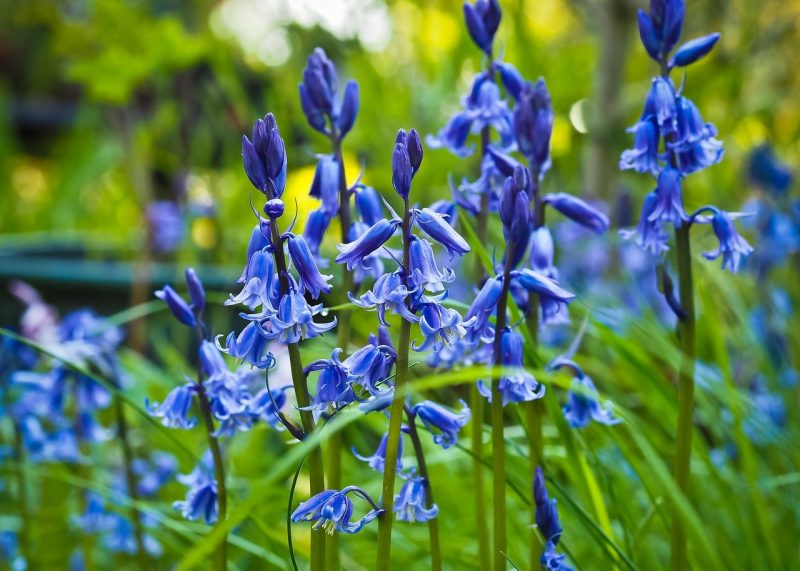Want to know how to propagate coral bells? Blooming in a myriad of different colors regardless of the season, Heucheras, or popularly known as coral bells, are best enjoyed when there are many of them.
Propagation is a gardening technique used in reproducing plants. In some flora species, it is the only way to obtain unique varieties and hybrids. For coral bells, which boasts nearly 300 known types, this process is often used by gardeners and mere plant lovers alike. They tend to grow in an average of 18 inches tall and 18 inches wide and have flower spikes with a bell-like appearance.

Aside from the diverse hues, there are numerous shades in the blooms as well. Given its aesthetically pleasing display, learning how to propagate coral bells is necessary as a lover of all things beautiful.
Best Propagation Methods for Coral Bells
Before jumping into the different ways to reproduce Heucheras, it is essential to know the appropriate conditions in growing them first. For the soil, coral bells prefer fertile loam that is moist and well-drained. Incorporating compost and using a balanced organic fertilizer can help amend the dirt. Be sure to place this plant or its container in a location with access to part shade and has good air circulation.
Also, irrigate them with about one inch of water per week, especially if the temperature is high. To prevent coral bells from heaving during winters, provide a layer of mulch about three inches thick.
Seed
Taking the seeds of coral bells can be quite tricky, but it is doable. However, the first thing you should know about this technique is that cultivars, even species that can grow from true seeds, cannot be propagated.
For instance, Heuchera Americana is compatible with seeding, while its cultivar Chocolate Veil is not. Therefore, you must first know your coral bells’ species and classification before using this method to propagate them.
Start by storing the seeds in a cold container like a refrigerator for about a month and a half. Afterward, sow them in place with access to light and wait for the germination to commence. Remember to sprinkle the seeds in a thin layer on the soil’s surface and avoid covering them.
You can also choose to germinate the seeds indoors first, then transplant them outside if they are mature enough. Do not forget to take care of it just like how you would towards any other plant by maintaining its healthy condition, watering sufficiently, and fertilizing it.
Division
An alternative method for propagating coral bells is division. Unlike the previous one, this technique is comparatively simple and effective in flourishing your garden. After all, you would only need to divide a fully grown plant into two.
This can be done on the same flower every three to four years. Aside from increasing the number of your coral bells, the division can also aid in maintaining its health and growth.
To do this, dig up a 15cm space from the base around each plant so that you can minimize the risk of accidentally cutting off the roots. They should be divided into varying yet appropriately sized pieces using a shovel or knife. Afterward, replant the divisions under the preferred conditions and wait for them to grow.
Leaf-bud Cuttings
Contrary to its title, this propagation method gives more importance to the stem rather than the leaves. After all, the growth buds where foliage grows are only found there.
When it comes to coral bells, leaf-bud cuttings can be executed in any season but is more preferred during spring. This is so that the parent plant can still recover before the temperature drops in winter.
First, cut a 4-inch section of a stem that is a quarter of an inch in diameter. Then, remove half of its leaves and lightly dip the bottom of the cutting in your rooting medium. Afterward, proceed to its center vein and cut it through the stem.
Next, lay the leaf on your planting area’s surface and tuck the cut end into the hormone. Dampen the stem cuttings two times every day since it must stay moist, but make sure to not overdo it as it might lead to rotting.
Ensure that you take good care of it by monitoring its condition until its roots have formed. By that time, you can already remove the coverings.
At the base of the leaf, you should be able to see new plants that are starting to form after ten days. The last step is to remove them from the parent and transplant them in individual spaces or containers.
Why You Should Grow Coral Bells in a Semi Pro Greenhouse?
Growing coral bells in a semi pro greenhouse is a great option for gardeners who want to protect their plants from pests, diseases, and unpredictable weather.
A semi pro greenhouse provides a safe space for coral bells. It lowers the risk of aphids, cabbage bugs, spider mites, and other pests from eating and damaging your plants. It also keeps your plants safe from diseases and infections that affected neighboring plants. Lastly, a semi pro greenhouse shields your plants from bad weather changes that can damage them.
Final Thoughts on How to Propagate Coral Bells
Heucheras are beautiful flowers that can grace any space. Knowing how to propagate coral bells allows you to grow several of these flowers, adding a pop of color in your garden, indoors, and more.
